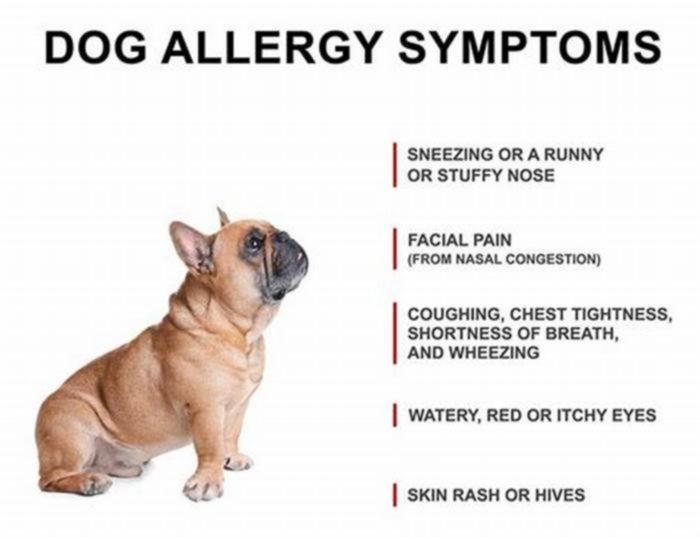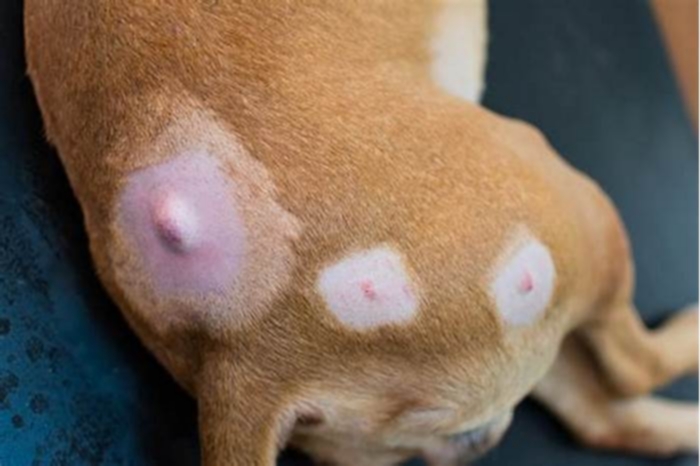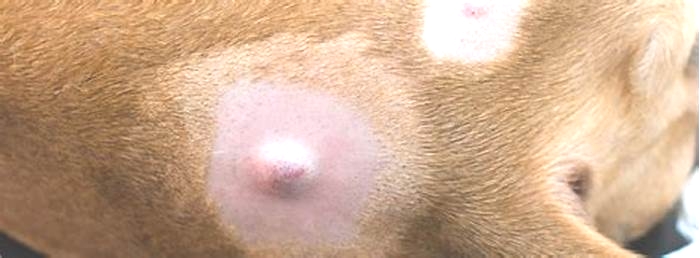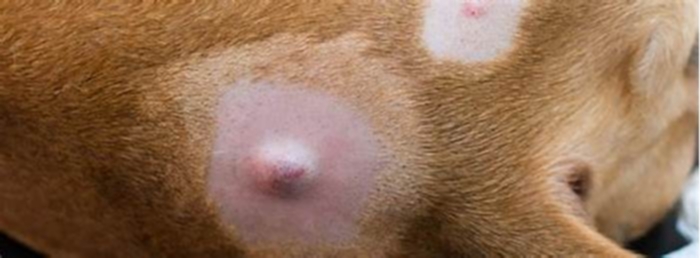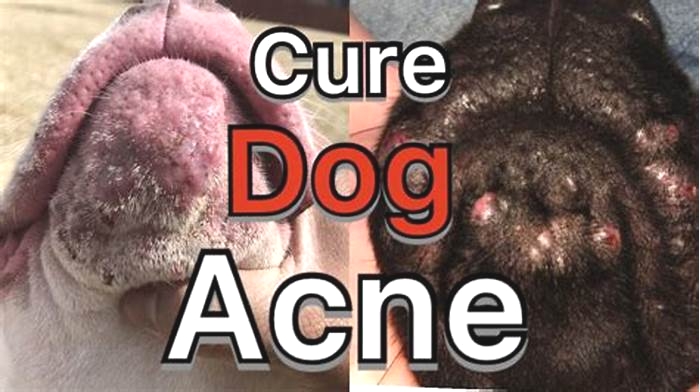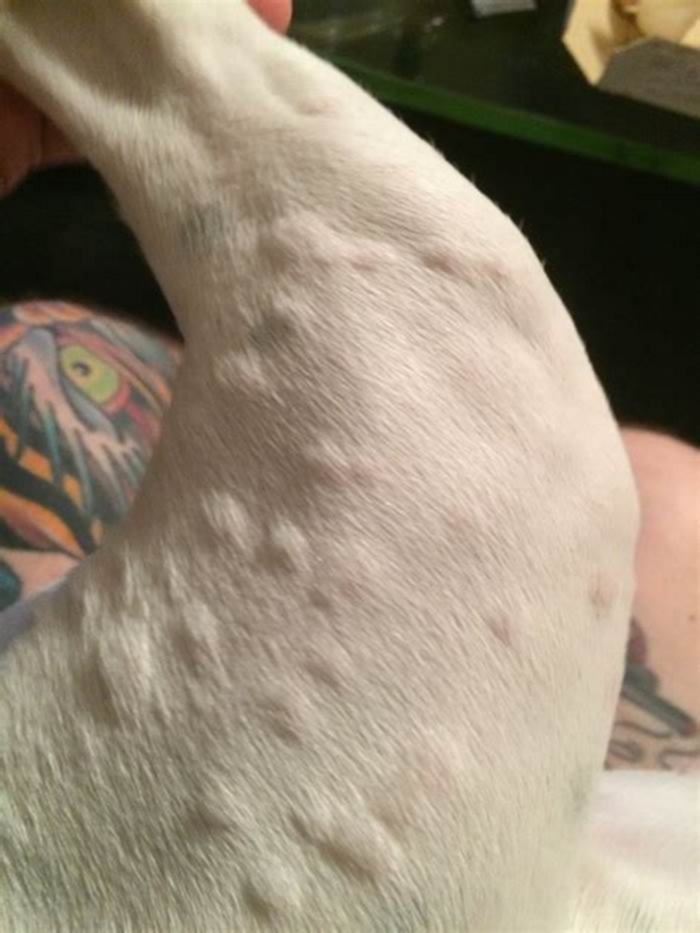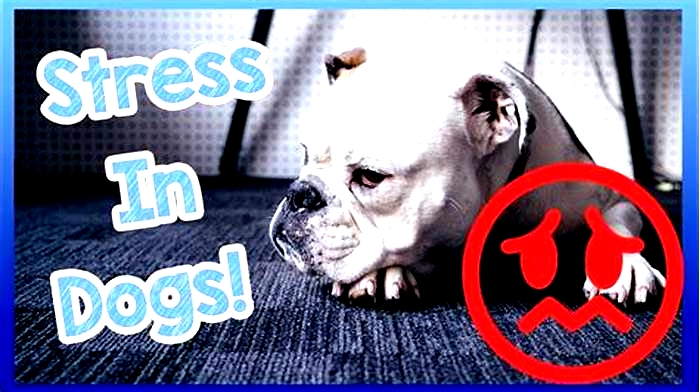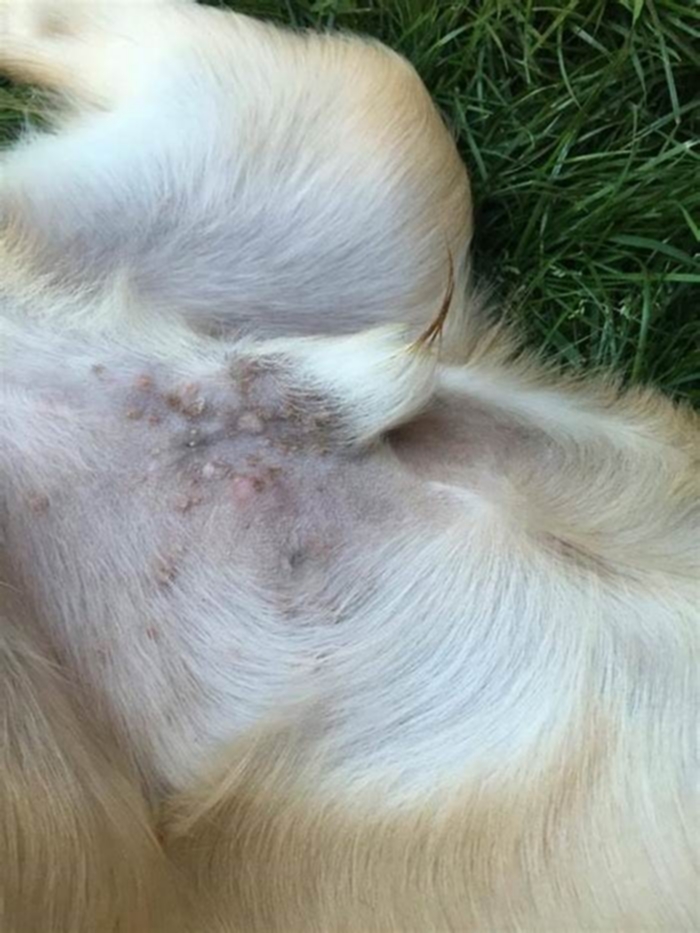When should I be concerned about my dogs bumps
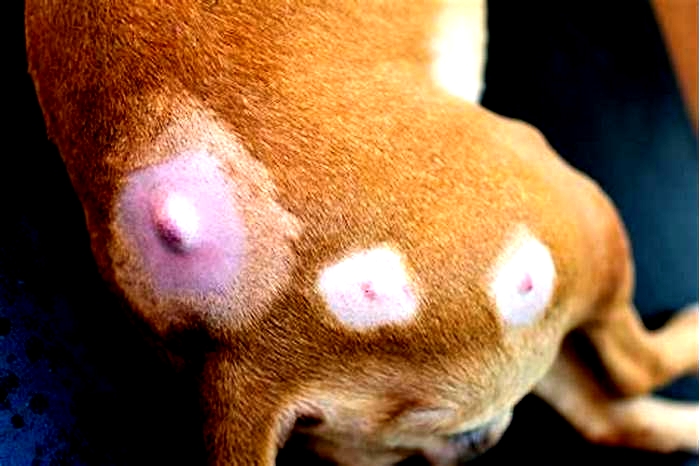
Bumps All Over Dog: Causes, Remedies, And Tips for Prevention
Pet owners could become concerned when they observe numerous bumps on their dogs skin. Frequently, such bumps could signal various skin ailments and conditions requiring prompt attention.
While some of these bumps may be harmless, such as allergic reactions, others could require immediate veterinary care. In this guide, we cover:
- Why is my dog getting bumps all over his body?
- What do allergy bumps look like on dogs?
- How do I get rid of bumps on my dogs body?
- When should I be concerned about my dogs bumps?
- And more
Why Is My Dog Getting Bumps All Over His Body?
Lumps and bumps all over a pets body can be a cause for concern for any pet owner. While some bumps may be harmless, others can be a sign of a more serious condition. In this section, we will discuss some of the most common causes of bumps on dogs.
Allergic Reactions
One of the most common causes of canine bumps are dogs skin allergies. Dogs can develop an allergic reaction to various things, including food allergies, flea bites, and environmental factors like pollen and dust. These allergies can cause bumps, hives, hot spots, and skin irritation.
The good news is that allergic reaction in dogs is fairly easy to treat with home remedies and once you remove the allergen, the bumps will also disappear.
Dogs can be allergic to a wide variety of things, including food allergies, environmental allergies, pollen, and insect stings. When a dog is exposed to an allergen, their body may commonly develop bumps or hives. These bumps can be itchy and uncomfortable for the dog.
What do Allergy Bumps look like on Dogs?
Skin allergies bumps on dogs can manifest in various ways depending on the underlying cause and the individual dogs reaction. Here are a few common types of allergy-related skin bumps seen in dogs:
Hives (Urticaria)
Hives appear as raised, swollen, and itchy bumps on the dog skin. They can be small or large, red or pink in color, and may be surrounded by a lighter area. Hives often appear suddenly and can move around the body.
Papules
Papules are small, solid, and raised bumps on the skin. They can be red, pink, or skin-colored. These bumps are usually itchy and may occur in clusters.
Pustules
Pustules are small, pus-filled common bumps on the skin. They can be red, swollen, and tender to the touch. Pustules often occur as a result of a bacterial infection secondary to the dog scratching or biting at the affected area.
Erythema
Erythema refers to generalized redness or inflammation of the skin. It may not always present as distinct bumps, but rather as a diffuse redness or rash. Erythema can be itchy and accompanied by other symptoms like hair loss, scaling, or crusting.
Wheals
Wheals are a skin condition that are similar to hives but are usually larger and have a more irregular shape. They appear as raised, pale, or red swellings on the skin, especially the dogs belly, and can be accompanied by itching.
Its important to note that these descriptions are general and that the appearance of allergy bumps can vary between individual dogs. If you suspect your dog has allergy-related skin bumps, its best to consult with a veterinarian for a proper diagnosis and appropriate treatment.
Also Read: Dog Allergy Testing
Skin Infections
Bacterial, viral, and fungal infections can all cause bumps on a young or older dogs skin. These infections can be caused by a variety of factors, including poor hygiene, exposure to other infected animals, and weakened immune systems. Infections can cause bumps that are red, swollen, and painful to the touch.
They include:
- Blastomycosis
- Folliculitis affecting the hair follicles
- Aspergillosis
- Cryptococcosis
- Candidiasis
- Fungal dermatitis
- Ringworm in the nail beds
If a pet owner notices bumps on their dogs skin, it is important to take it to a veterinarian for a proper diagnosis. The vet may recommend medicated shampoo, dip baths, or topical and oral medicines for the skin infection.
Note that fungal skin issues are highly contagious and can spread to other pets through direct contact.
Insect Bites
According to PetMD, the most common bites in young or older dogs include mites, fleas, ticks, mosquitoes, ants, bee sting, hornets, or wasps.
You might notice the following signs in addition to bumps: red, itchy skin, constant scratching, blisters, or a rash. Dog suffers from scratching and it can impact its quality of life.
Some dogs that develop an allergic reaction to the bite or sting could show the following common signs:
- Excessive drooling
- Swelling
- Hives
- Difficulty breathing
- Lesions
If your dog is unable to breathe, it could develop anaphylaxis. Please take it to the vet for a complete physical exam immediately.
Insect stings can be mostly prevented by using flea and tick preventatives and keeping your dog indoors during peak mosquito activity.
Also read: Effective Ways to Treat Ant Bites on Dogs
Dermatitis
Acute moist dermatitis and atopic dermatitis in female or male dogs usually starts with pruritis, or red, itchy skin. Your dog might scratch its face, paws, flank, lower legs, and ears. There may be hives or urticaria and skin bumps. Other signs are flaky skin, raised bumps, and irritated skin.
Tumors
According to vets, skin tumors in dogs are generally benign growths or non-malignant and rarely spread. They may include:
- Mast cell tumors
- Histiocytoma
- Squamous cell carcinomas
- Sebaceous gland tumors or sebaceous cysts
- Melanomas
- Papilloma
- Hemangiomas bloody lumps affecting blood vessels.
- Lipoma cancer of fat cells
- Fibrosarcoma cancer of the connective tissue and surrounding tissues
Benign tumors are not cancerous and do not spread to other parts of the body.
In rare cases, the skin tumors could be cancerous or malignant. Malignant tumors can spread to other parts or other organs of the dogs body. Tumors generally cause bumps that are firm and may be attached to the skin or underlying tissue.
A veterinary exam of the canine skin along with certain tests can determine the exact type of tumor. Depending on the diagnosis, the vet may recommend radiation treatment or surgical removal of the tumors to alleviate the symptoms and improve the dogs overall health.
The cost of simple surgical removal of benign tumors is around $180-$300 while some deeper tumor surgical removal can cost over $1000. The surgery usually lasts few hours. Your dog will need veterinary care for some weeks post-procedure.
Recognizing Lumps and Bumps on Your Dog
Bumps on your fur babys skin can be worrisome for dog owners. While some bumps may be harmless, others may require medical attention. Its important for dog owners to know how to recognize bumps on their pets skin and determine whether they require veterinary care.
There are several types of bumps that can appear on the skin. These include:
- Cysts: Sebaceous cyst is a fluid-filled sac that can appear anywhere on the pets body. They may be soft or firm and can range in size from small to large.
- Warts: Warts are small, raised bumps that can appear on the canine skin. They are caused by a virus and are usually harmless.
- Mast Cell Tumors: Mast cell tumors are a type of skin cancer that can appear as raised, red, or pink bumps on a dog skin. They usually appear on the dogs head and are more common in old dogs than young dogs.
- Skin tags these are benign growths on the dogs skin. They usually appear on the face, armpits, and bony parts of the body.
- Hives: Hives are raised, itchy bumps that can appear suddenly on the skins surface. They are usually caused by environmental allergies or atopic dermatitis due to fleas, although a food allergy could also be responsible for small bumps on the abdominal wall.
- Abscesses: Abscesses are pus-filled bumps that can occur when bacteria enter a wound or bite a dog.
Pet owners should regularly check their bodies for any bumps on dogs, skin tag, or lumps. They should pay particular attention to affected areas where the dermatological surface is thin, such as the belly, ears, and armpits.
If a bump is detected, dog parents should monitor its size and appearance. If the bump is growing, changing in color, or causing discomfort to the dog, its important to seek veterinary treatment.
How Do I Get Rid of Bumps on Dogs Body?
To address and alleviate bumps on your pets body and improve his skin condition, here are some steps you can take:
Identify the Underlying Cause of the Skin Infection
Bumps on the dog can result from various factors, including allergies, insect stings, infections, or other skin conditions.
Identifying the cause is crucial for effective treatment. Its recommended to consult a veterinarian for severe cases to perform a thorough examination and potentially conduct tests to determine the root cause.
Manage Allergic Reaction
Skin allergies are a common cause of lumps in dogs. Allergens such as hay fever, pollen, dust mites, or certain foods may trigger allergic reactions and cause dogs lumps.
Your veterinarian may suggest allergy testing of the dogs immune system, elimination diets, or hypoallergenic dogs diet, to identify and manage these triggers. Allergy medications like antihistamines or corticosteroid treatment may be prescribed to help control the symptoms.
Minimize Exposure to Irritants
If environmental allergens are causing the bumps, take steps to minimize your dogs exposure to them. This can involve keeping the living environment clean and dust-free, using hypoallergenic bedding, and avoiding areas with high pollen counts.
Regular bathing with a mild, hypoallergenic shampoo can also help remove allergens from the dog skin.
Address Flea and Tick Infestations
Flea or tick bites can cause irritation and bumps. Use veterinarian-recommended flea and tick preventives regularly to protect your dog from these pests.
Additionally, keep your dogs living area clean and regularly vacuumed to minimize flea infestations.
Prevent Excessive Scratching
Excessive scratching can worsen the bumps and lead to infections.
To prevent scratching, your veterinarian may recommend an Elizabethan collar (cone) or alternative solutions like specially designed doggy shirts to cover the affected areas. Trimming your dogs nails can also reduce the damage caused by scratching.
Treat Secondary Infections
If your dogs scratching has led to bacterial or yeast infections, your veterinarian may prescribe appropriate medications, such as antibiotics or antifungal treatments, to combat the infections. Treating any underlying infections will help alleviate the bumps and promote healing.
FAQs Bumps on Dogs Skin
How do I treat little bumps on my dog?
Use some home remedies like aloe or coconut oil for little bumps on dog . If the bumps worsen or your dog develops other issues, please seek prompt veterinary help.
Why is my dog getting bumps on his body?
Your dog may be getting bumps a commonly caused issue on the body due to various reasons, including allergies to environmental allergens or food, insects bites, skin infections, or other underlying skin conditions.
Its best to consult a veterinarian to determine the specific cause and appropriate treatment for your dogs condition.
What do allergy bumps look like on dogs?
Skin allergies bumps on dogs can appear as raised, swollen, and itchy hives (urticaria) or small, solid, and itchy papules. The bumps may vary in size, and color (red, pink, or beige colored), and may occur in clusters.
Conclusion Skin Problems in Dogs
Bumps on dog can have various causes, including allergies, infections, insect bites, or other skin conditions.
It is essential to identify the root cause through veterinary consultation to determine the most appropriate treatment and alleviate any discomfort or complications. Prompt attention and proper care can help ensure your furry friends skin health and overall well-being.
Suspicious Lump on Your Dog? Heres When to Tell the Vet.
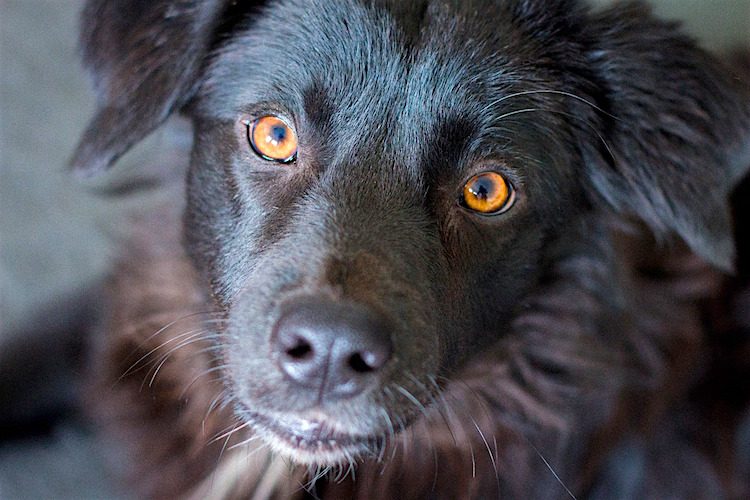
Two dogs were booked yesterday with the same problem, one after the other.
The reason given in the chart? Client concerned as a lump has got bigger.
But whereas one dog needed no further action, the other dog faces referral to a specialist. Why? Because one lump was a harmless fatty bump, but the other was a potentially serious tumor.
What these dogs had in common were concerned humans. They had both done the right action in bringing their pet to the veterinarian to investigate suspicious lumps on the dogs.
Found a Suspicious Lump on Your Dog
Most people find a suspicious lump on their dog and immediately think ofcancer.
Are all lumps cancer? No!
A lump is a swelling or area of tissue thickening. There are many reasons a dog can get a suspicious lump. For example:
- A cyst: This is a lump filled with fluid that is secreted from the lining of the cyst.
- An abscess: This is a discrete collection of pus, usually the result of a bite or scratch.
- Bruising and thickening: This is a result of a knock or blow.
- Ticks or foreign bodies: A colleague of mine once diagnosed a tumor as a boiled sweet stuck in the dogs fur.
But what if the suspicious lump on your actually is cancer?
Not all lumps are the same.
Theres a spectrum of seriousness that ranges from nothing to worry about to potentially life-threatening. But while its the latter that sticks in the mind, the former are more common.
Cancers are also divided into:
- Benign:The lump grows bigger but wont spread to other parts of the body.
- Malignant: These aggressive lumps have the potential to spread to the organs.

When to Worry About a Suspicious Lump on Your Dog
Get any new lump or any existing lump that changes in some way checked out.
There are certain signs that can tell you that an urgent visit to the vet is for the best.
These include:
- Rapid growth: A suspicious lump on your dog thats growing quickly can cause problems in 2 ways. First, this may be a hint its more aggressive, and second, a large lump is more tricky to remove than a small one.
- Redness: Some more serious lumps on dogs release chemicals that cause tissue reaction and inflammation. If the bump looks sore or bothers the dog, then get it checked out as a matter of urgency.
- An ailing pet: Again, some tumors release chemical factors that affect general health. If the dog lacks energy, is losing weight, has tummy troubles or is drinking a lot, then let the vet know.
Common Questions About Suspicious Lumps on Dogs
What ifI can lift the lump up in the skin, away from the tissues underneath?
This is a good sign, since aggressive lumps often invade the deeper tissues.
But and its a big but some more serious lumps on dogs, such as mast cell tumors, can mimic less harmful ones, so even this sign is no guarantee.
The dog has had the lump for years, and its never changed. Should I worry?
Again, no change is generally considered a good sign because aggressive cancers are just that and will grow quickly.
However, check those lumps and bumps monthly.
- Take a photo, if necessary, so you have a record.
- Better still, photograph the lump next to a ruler so you know the exact size.
If the lump starts to grow, becomes red or changes character, then it is a suspicious lump on your dog and off to the vet it is.

Why You Should Listen to Your Vet About Pathology
I found a lump, and Im in a panic.
I hear this all the time. I also hear a follow-up comment at times that makes me unhappy: Just take it off, and I dont want to know what it is, says the worried client. Oh, boy. Now Ive got some convincing to do.
Most growths that warrant removal also warrant analysis. This analysis is called a biopsy or pathology.
Its important to get a diagnosis on a growth, to give it a name so that we know what we are dealing with, but many people balk at this idea. For the purposes of this article, assume that lump, bump, growth, mass and tumor are interchangeable terms.
What Clients Sometimes Say
If its bad news, Id rather not know.
I hear this a lot when someone declines to send out a biopsy. Well, what if its good news?
- Many growths or tumors can be cured when surgical removal is complete.
- Did you know we use the term tumor even when describing a benign growth, such as a fatty tumor, commonly called a lipoma? Tumor means an abnormal growth of tissue. It is not synonymous with cancer. There can be benign tumors and malignant tumors.
- Some growths might look nasty and have you and your vet concerned, but the diagnosis may paint a more favorable picture.
- If you dont get a diagnosis, you live with worry and concern. An answer stops the What if? syndrome.
If its cancer, I wont put my pet through chemo.
There is so much wrong with this kind of thinking. First of all, recommending chemotherapy following a growth removal is not all that common.
If and thats a big if some sort of drug therapy is recommended following surgery, we usually choose chemo drugs that have low toxicity and are tolerated well. If the drug doesnt agree with the pet, we can always stop the drug, usually without doing lasting harm.
If a biopsy does yield bad news, many people in the I wouldnt do anything drastic camp change their tune when follow-up treatment could mean a longer life or cure for their pet.
No biopsy for my pet its too expensive.
Lab fees can be costly, pathology fees costing upward of $200.
The information obtained, however, can tailor a follow-up treatment plan. Knowing the type and behavior of the tumor your pet had removed helps us make decisions in the future.

Cytology, Biopsy, Pathology
There are a number of ways to get information about a growth, both before and after removal.
Fine Needle Aspirate (FNA)
Basically, a fine needle aspirate is a fancy way of saying we stick a needle in a lump, squirt the contents of the needle on a slide, stain the slide and look at the splat!
Looking at cells like this is called cytology. Hopefully, the splat (aspirate) contains cells that give us a clue about the type of growth were dealing with.
FNAs are quick, easy and inexpensive, but they yield limited information. Many FNAs give us an idea that a growth is probably benign or probably cancerous but tell us little about how that growth will behave or the severity of the cancer.
Biopsy
A biopsy usually refers to a sampling of a growth taken prior to removal of the entire growth and having it analyzed by a veterinary pathologist.
Many biopsies can be done with only a local anesthetic. In an ideal world, it would be great to biopsy every growth and know the diagnosis prior to surgical removal.
The pros of doing a biopsy are many. The biopsy can suggest how much of a pre-surgical work-up should be done and tell the surgeon how conservative or radical to be at the time of surgery.
Certain tumors, for example, due to their aggressive behavior, require a very wide excision to get the best chance at a cure. Having a reliable biopsy in advance prepares the client, surgeon and patient for a basic or more radical surgery.
The cons generally have to do with putting the animal through an additional procedure, the cost and the possibility that the small section of tissue submitted for biopsy may not be representative of the entire mass.
Rarely, excessive bleeding can occur.
Histopathology
Histopathology refers to the preparation and microscopic examination of tissue samples.
Usually, we use the phrase sending out for pathology when we remove an entire mass and send that mass with surgical margins to the pathologist. The tissue (growth, mass, tumor, etc.) is the biopsy sample, and histopathology is the analysis.
Sending an entire mass to the lab for pathology gives us the best diagnosis and tells us if our margins are clear of tumor cells. The pathologist will also comment on the specific character of the cells in the mass, stage the tumor if applicable and often give an opinion about prognosis.
Sending Out the Biopsy
When clients understands the important medical information and prognostic factors that can be learned from pathology, they frequently agree to the added expense.
Occasionally, a client declines the biopsy, even when I strongly recommend it be done. I tell these people on the emotional or financial fence that their pets tumor is fixed in formalin. The sample is not time-sensitive and can go out to the lab next week or next month.
The bottom line: When your vet recommends the pathology, please do it.
The Most Common Lumps and Bumps on Dogs
This isnt meant as an exhaustive list but as an idea of the types of lumps that are most common in dogs.
- Warts: The extra skin tags or lumps of skin are usually harmless but may bleed if caught by a brush or collar.
- Fatty lumps, or lipomas: These are localized fat deposits that are common in older dogs. Again, they are of no significance other than if they grow so large they become a nuisance.
- Mammary cancer: This is more common in older female dogs who are not spayed.
- Mast cell tumors: These can range from those lumps where removing them solves the problem to potentially aggressive lumps that can spread. Theyre common in younger dogs, and surgical removal is the best option.
- Sebaceous cysts: Common in older animals, some cysts are filled with a white, almost toothpaste-like secretion. They are of no concern other than being a nuisance.
- Histiocytomas: Another skin tumor that occurs in young dogs, these ones do eventually subside of their own accord. However, the problem is mast cell tumors can mimic histiocytomas, so removal is the safest option.
These vets provide great information and advice for those who have found suspicious lumps on their dogs:
Final Thoughts on Suspicious Lumps on Dogs
Check your dog regularly for lumps and bumps.
If you find a new lump or an old lump is growing, get them checked by a veterinarian.
Should the lump be something worrisome, early intervention gives the best chances of a good outcome. So dont go into denial, but keep calm, carry on and get your pet checked by a vet.
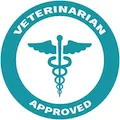
This pet health content was written by a veterinarian,
Dr. Pippa Elliott, BVMS, MRCVS, with contributions from another veterinarian,
Dr. Debora Lichtenberg, VMD. It was last reviewed Aug. 14, 2019.
If you have questions or concerns, call your vet, who is best equipped to ensure the health and well-being of your pet. This article is for informational purposes only and is not a substitute for professional medical advice, diagnosis or treatment. See
additional information.

